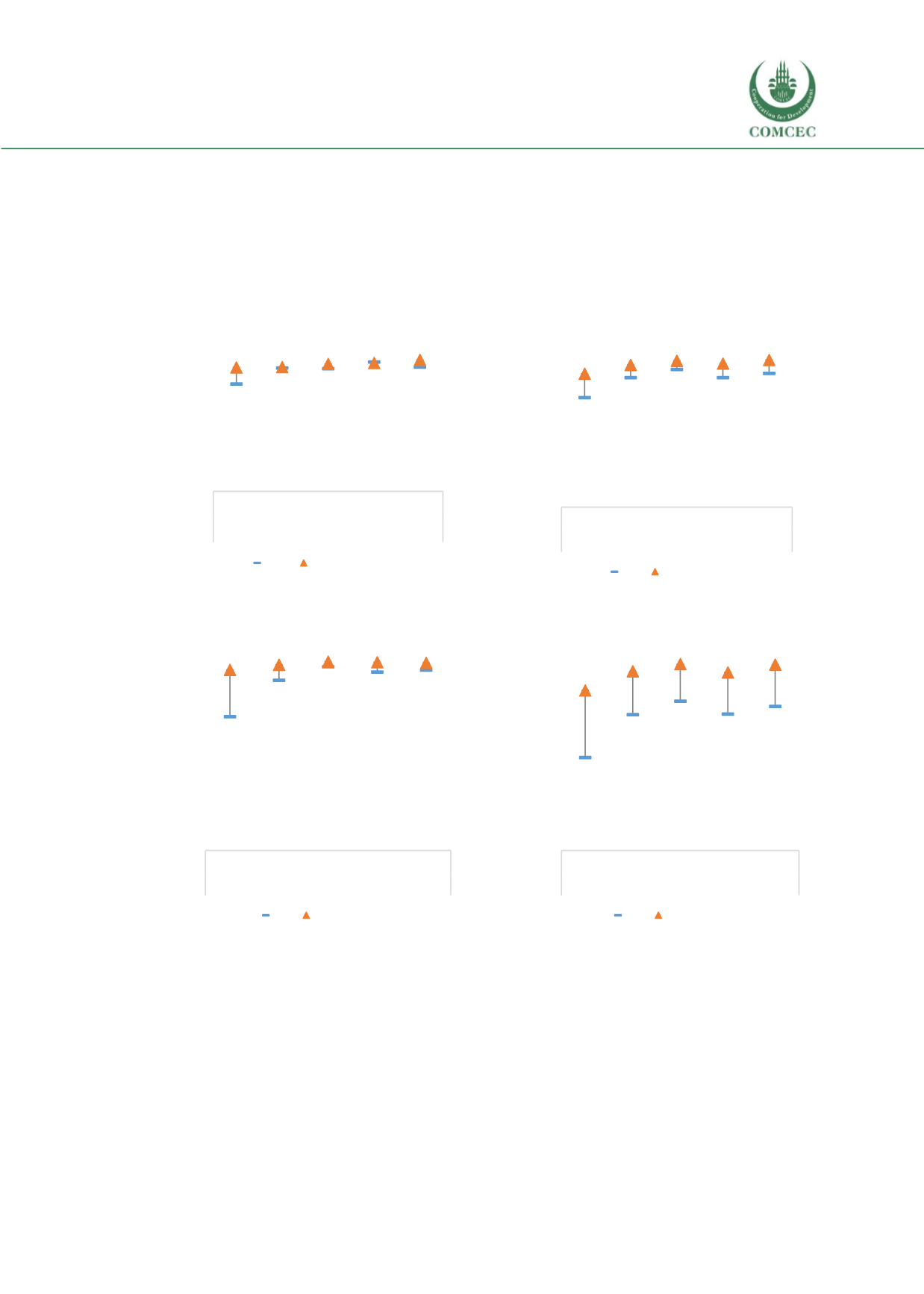

Education of Disadvantaged Children in OIC:
The Key to Escape from Poverty
99
78.2 percent to 90.3 percent, and completion rates for 5 years of education rose to 94.8 percent
from 70.2 percent during the aforementioned decade. While in 2003 less than half of 16-18 year
old were finishing 8 years of education (48.8 percent), in 2013 this completion rate reached 84
percent. Although the improvements are promising, further steps are needed to eliminate
regional disparities (se
e Figure 37).
Figure 37 DHS 2003-2013 Difference in access rates by regions
A.
Attendance in School (6 – 11 year olds)
B.
Attendance in School (12 – 15 year olds)
C.
Finishing 5 years of education (12 – 15
year olds)
D.
Finishing 8 years of education (16 – 18
year olds)
Note: Authors’ calculations using DHS 2003 and DHS 2013
Language:
Differences in language spoken at home seem to affect school completion rates more
than initial enrolment at school. Over the years, the rate of school enrolment and completion for
both 5 and 8 years of education increased among both non-Turkish and Turkish speaking
households. The improvement is more visible in non-Turkish households. However, even though
the language gap significantly narrowed with respect to attending primary education, finishing 8
years of schooling can still be burdensome for children from non-Turkish speaking households
(se
e Table 11 ).
0
20
40
60
80
100
East South Central West North
Region
attendance to school for children
aged 6 - 11 years old (%)
2003 2013
0
20
40
60
80
100
East
South Central
West
North
Region
attendance to school for children aged 12
- 15 years old (%)
2003 2013
0
20
40
60
80
100
East
South Central
West
North
Region
finishing 5 years of education (% of 12-15 year
olds)
2003 2013
0
10
20
30
40
50
60
70
80
90
100
East
South Central
West
North
Region
finishing 8 years of education (% of 16-18 year
olds)
2003 2013
















